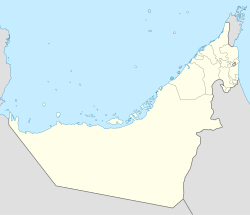Hayl Fort | |
|---|---|
| Coordinates: 25°06′13″N56°17′14″E / 25.103619°N 56.287247°E | |
| Country | United Arab Emirates |
| Emirate | Fujairah |
Al Hayl Fort is located in the Wadi Hayl, to the West of Fujairah, in the United Arab Emirates. Constructed in 1932 by Sheikh Abdullah bin Hamdan Al Sharqi, the fort formed his principle residence for the following two decades. Consisting of a fortified courtyard house and an associated watchtower with commanding views to the East and West of Wadi Hayl, Al Hayl Fort overlooks the old village of Al Hayl, of which many buildings have now been restored. The village was abandoned in the late 1970s following the resettlement of its inhabitants to a new village further down the wadi, a seasonal watercourse, and protected by the Al Hayl Dam. [1] The village was traditionally settled by members of the Kunud tribe (In 1908, Lorimer described the village, which he named 'Hail' as being located 'inside the hills behind Fujairah' and consisting of 'around ten houses of Jalajilah and Kunud'), [2] with evidence that the area has been settled since the Umm Al Nar period, with Umm Al Nar tombs and Iron Age petroglyphs both found in the area. [3] A number of these are now being threatened by ongoing construction in the area. [4]



